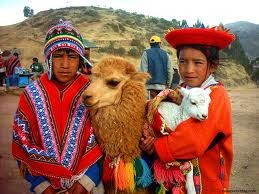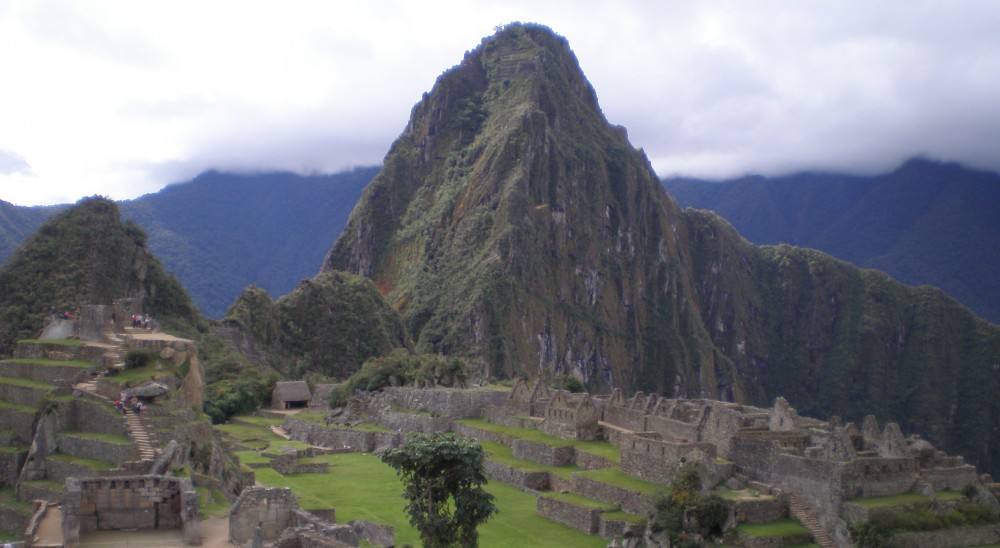History of Education in Peru

The history of education in Peru demonstrates various issues of conflict such as the hierarchy of Europeans over the Native Americans, Spanish versus Quechua and Aymara language, and urban versus rural. How does a country approach these numerous issues of diversity and come to a standardized universal education system that works for all involved? To this day the curriculum, syllabi, and course outlines are dictated by the Ministry of Education. Teaching methods are left to the individual teacher, but is this enough to approach a mostly bilingual and bicultural student population? Over the course of this series we will try to answer some of these questions based on history, philosophy, and the culture of Peru.
The official education system in Peru started with the Spanish ruling class in 16th century Lima. Lima was the center of religious education for the clergy and a place where many migrated to for purposes of education and work opportunities. After the 1821 war of independence, education was expanded to a larger part of the population. Provincial “colegios” were designed in the early 1800’s in Ayacucho, Huaraz, Chiclayo, and Trujillo in order to keep people from migrating to the major cities of Lima or Cuzco. In 1855 the primary and secondary levels were uniformly formed, and this signaled a period of putting government funded universal education into operation. At this time, the first uniform secondary school curriculum was created by Simeon Tejeda to focus studies more on vocational training (Marlow-Ferguson, 1045-6).
In the early 1900’s the Ministry of Education took on the full administration and financing of schools throughout Peru. During 1944-1962 a joint organization of educators in Peru and the U.S. established and funded the “ Servicio Cooperativo Peruano Norteamericano de Educacion (SECPANE). Its goal was to spread access to education to Peru’s Andean Native Americans. They created “central resource schools”, which were a main source of supplies and staff to serve smaller schools.
In the 1960’s the government made a law stating that any community that could build its own schoolhouse would be guaranteed a teacher by the government. Many rural communities took the opportunity, which gave rise to higher enrollment rates and more opportunities for rural students. In 1972, the Ministry of Education made a reform to align education goals with workforce goals. There was also an rise in educational funding and a goal to provide free and equal education to students from primary school through university. In the early 1990’s there was an economic crisis with Peru having an unemployment rate of 94% in Lima and a 7,000 % inflation rate. This economic crash had damaging effects on education funding and the school system. In 1997, structural and curricular goals were set by the Ministry of Education to recover from the crisis (Marlow-Ferguson, 1046).
Culture of Peru
 Peru is located on the Northwestern side of South America. It is split into 3 distinct sections dictated by geography. On the west is coastal Peru, which hosts Lima, the largest city in the country. Historically, Lima has had an economic advantage due to trade and accessibility on the coast. Additionally, African slaves were brought to the central and southern coastal regions of Peru between 1530-1850, thus forming another cultural group of Afro-Peruvians. The area to the south and inland hosts the Andes and indigenous cultures that primarily speak Quechua. Smaller groups in the very south, close to Lake Titicaca, speak Aymara. On the eastern side of the country spans “la selva” or the Amazon Rainforest. This area is home to many other indigenous groups such as the Shipibo Indians. Additionally, during the 1900’s, Peru became even more multicultural with the immigration of Japanese workers to mostly coastal regions of Peru.
Peru is located on the Northwestern side of South America. It is split into 3 distinct sections dictated by geography. On the west is coastal Peru, which hosts Lima, the largest city in the country. Historically, Lima has had an economic advantage due to trade and accessibility on the coast. Additionally, African slaves were brought to the central and southern coastal regions of Peru between 1530-1850, thus forming another cultural group of Afro-Peruvians. The area to the south and inland hosts the Andes and indigenous cultures that primarily speak Quechua. Smaller groups in the very south, close to Lake Titicaca, speak Aymara. On the eastern side of the country spans “la selva” or the Amazon Rainforest. This area is home to many other indigenous groups such as the Shipibo Indians. Additionally, during the 1900’s, Peru became even more multicultural with the immigration of Japanese workers to mostly coastal regions of Peru.

- Regions in Peru
According to the constitution, Spanish and Quechua are official languages. About four and a half million people speak Quechua in Peru, which is approximately 19 percent of the total population. (Instituto Nacional de Estadística e Informática: Censos Nacionales, 1993). Some regions are primarily Quechua speaking, for example, Quechua speakers consist of almost 64 percent of the population: 39 percent in urban centers and 86 percent in rural areas in the Department of Cusco.
Quechua was only recently declared an official language in 1975, thus reflecting the shift to bilingual inclusion and bilingual education. Moreover, in the areas where they are prevalent, Aymara and other indigenous languages also have official status.
Educational Structure, Curriculum, and Teaching

All curriculum is established by the Ministry of Education, which includes all syllabuses and course outlines, except for university education. These materials are required by law to remain in place for 6 years before revisions can be made. Even though content is tightly controlled by the Ministry of Education, teachers are allowed flexibility in pedagogy according to what they see fit depending on student level, resources available, and their own teaching strengths (Postlethwaite, 783).
Primary school curriculum focuses on reading, writing, and oral competency. It also teaches basic knowledge of the history and geography of Peru, knowledge and practice of ethical, civic, aesthetic, and religious values. It consists of language, mathematics, physical education, artistic education, natural sciences, social sciences, religious education, and vocational education ( Wickremasinghe, 624).
Secondary Education lasts for 5 years with the first 2 being general education. During the remaining 3 years students are put into more specific tracks such as science-humanities, agricultural, artisanal, commercial, and industrial training.
In the science-humanities stream, the curriculum comprises of an average of forty hours of studies including western academic topics such as language and literature, social sciences, and natural sciences. In the other streams, variations are made to focus on vocational areas relevant to each stream. (Wickremasinghe, 624).
Vocational tracks were put into place in 1866, around the time of the Industrial Revolution in Europe, possibly in response to growing technical need in the labor force. Students on the vocational track are expected to enter a vocational program, although studies show that students haven’t received sufficient hands-on training in the post secondary schools to be prepared for the labor market (Bellew, 7).
In higher education, universities offer a bachelor’s degree, which is a minimum of 10 semesters. A research memoir is required to complete the degree. Master’s and Doctoral degrees both take four semesters or more and require a public defense of their thesis and foreign language knowledge. The university system functions independently through a university assembly made up of university authorities, professors, students, and alumni. Education at public universities can be free of charge if the student successfully completes the degree within the allotted time frame. Private universities charge a fee, but award scholarships based on academic achievement. It may appear to be a functional system, however, only 21% of the students that try to enter a university are actually admitted. This leaves 79% of students to seek other avenues of education such as vocational schools or entering a pre-university preparation program in hopes to be admitted further on (Wickremasinghe, 628).
In primary and secondary education, there are further issues that impact the efficacy of the education system in Peru. There are various issues with teachers receiving insufficient training, which has been a consequence of the swift expansion of the education system. It is also due to the low wages offered teachers, which caused many qualified teachers to leave the field. Additionally, many teachers are unwilling to take posts in rural areas. Moreover, there is an increase in absenteeism and decreased amount of time dedicated to class preparation or evaluation. Rural areas are lacking sufficient resources and teachers often travel large distances to reach their schools (Postlethwaite, 783). Some movements are being made to solve rural schooling issues, such as multigrade classrooms or making low-cost materials, but teachers need more training in order to implement these pedagogical methods. Further issues are the lack of connection between the educators and educational administrators. Educational reforms are therefore difficult to implement and teachers have very little influence in what reforms are made ( Wickremasinghe, 629).
Philosophy of Education
Much of the philosophy of education in Peru has been based on the Spanish ruling class. Education has been seen as a way to preserve a certain level of hierarchy in Peru. It has given a sense of superiority to the privileged classes and also caused the indigenous populations to assimilate and conform to more westernized forms of thought. For example, a main goal in the education system was to provide religious instruction in the form of Catholicism. Another goal was to train clergy and bureaucrats to continue a hierarchy in this system, as well as train the lower classes the social standards of the ruling class.
Over the years the country has come up with many initiatives concerning education in the country. Various parts of the constitution are dedicated to education. Education is seen as “a core factor in personal development to be protected by the state and encouraged by the family” (Marlow-Ferguson, 1047). The constitution establishes the authority of the Ministry of Education over all curriculum and administrative matters in education throughout the country. Moreover, education is seen as a way to foster a nationalistic identity and especially took on this goal after the War of the Pacific at the end of the 18th century, when Peru lost wealth, prestige, and territory (Marlow-Feruson, 1049).
More recent reforms have been made since the economic crash in the 1990’s. These goals reflect a new approach to integrating language and cultural differences. There is no longer a “Spanish-only” policy for education and now there is support and promotion of bilingual education such as Spanish-Quechua or Spanish- Aymara.
The new goal of education is to “learn to be, learn to coexist, learn to become, and learn to learn” (Marlow-Feruson, 1047).
References
Wickremasinghe, W. (1992). Handbook of World Education: A Comparative Guide to Higher Education & Educational Systems of the World. Houston, TX: American Collegiate Service.
Marlow-Ferguson, R. (2002). World Education Encyclopedia (Vol. 2, pp. 1045-1049). Farmington Hills, MI: Gale Group.
Postlethwaite, N. (1995). International Encyclopedia of National Systems of Education. Cambridge, UK: Cambridge University Press.
Bellew, R., Mook, P. (1990). Vocational and Technical Education in Peru. Economics of Education Review, 9 (4), 365-375.


